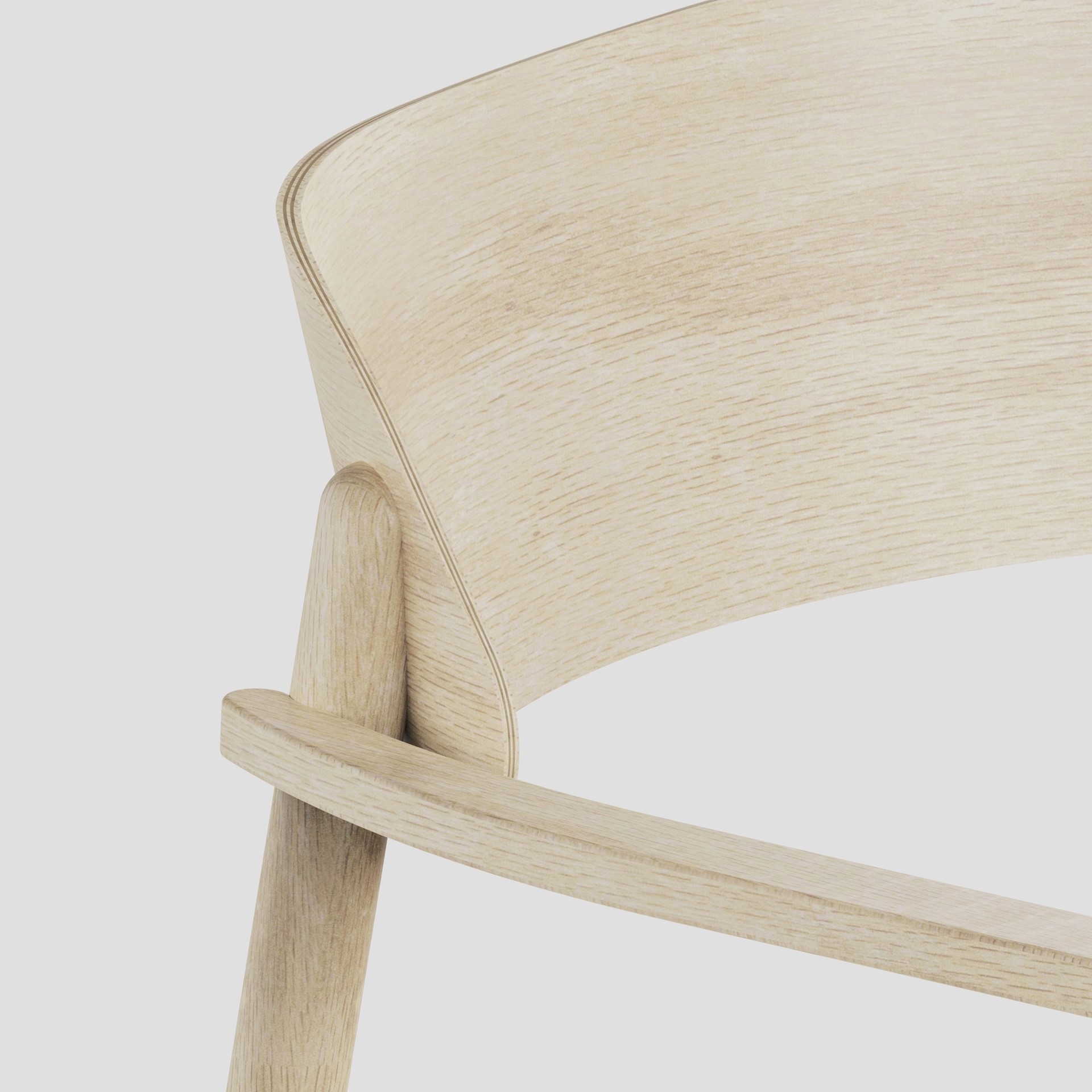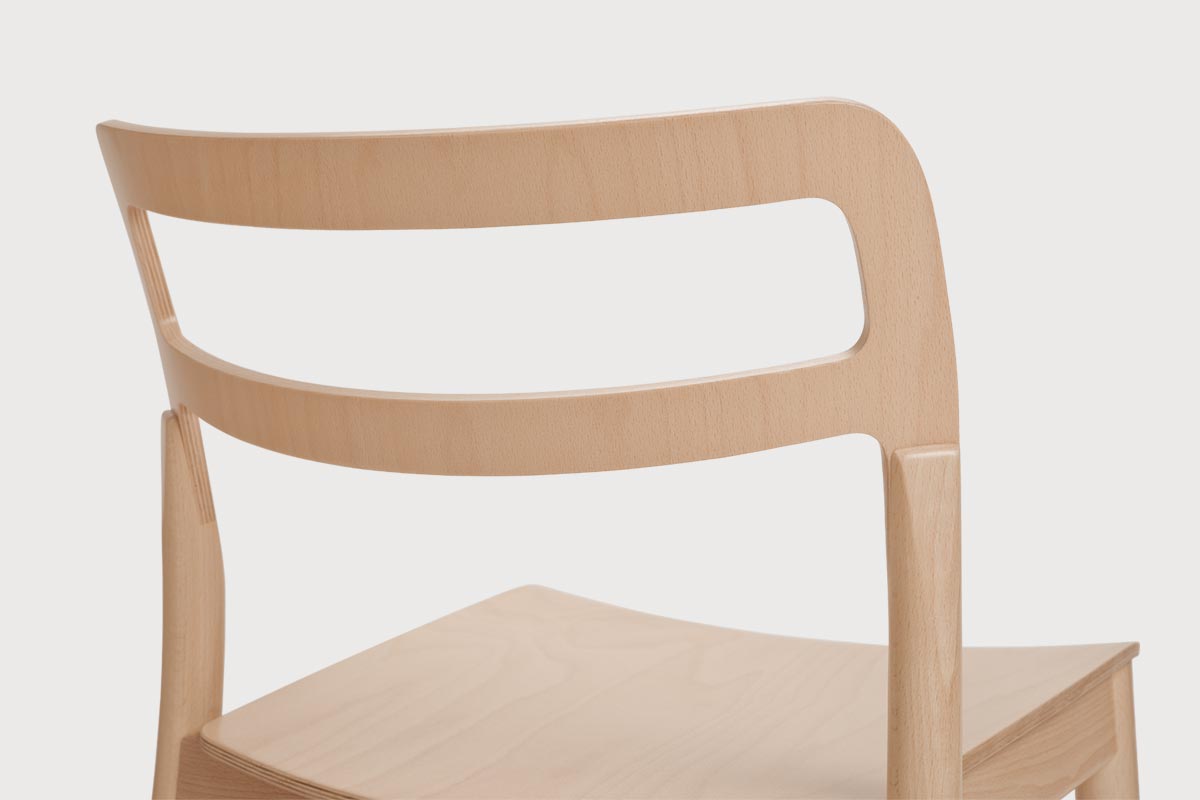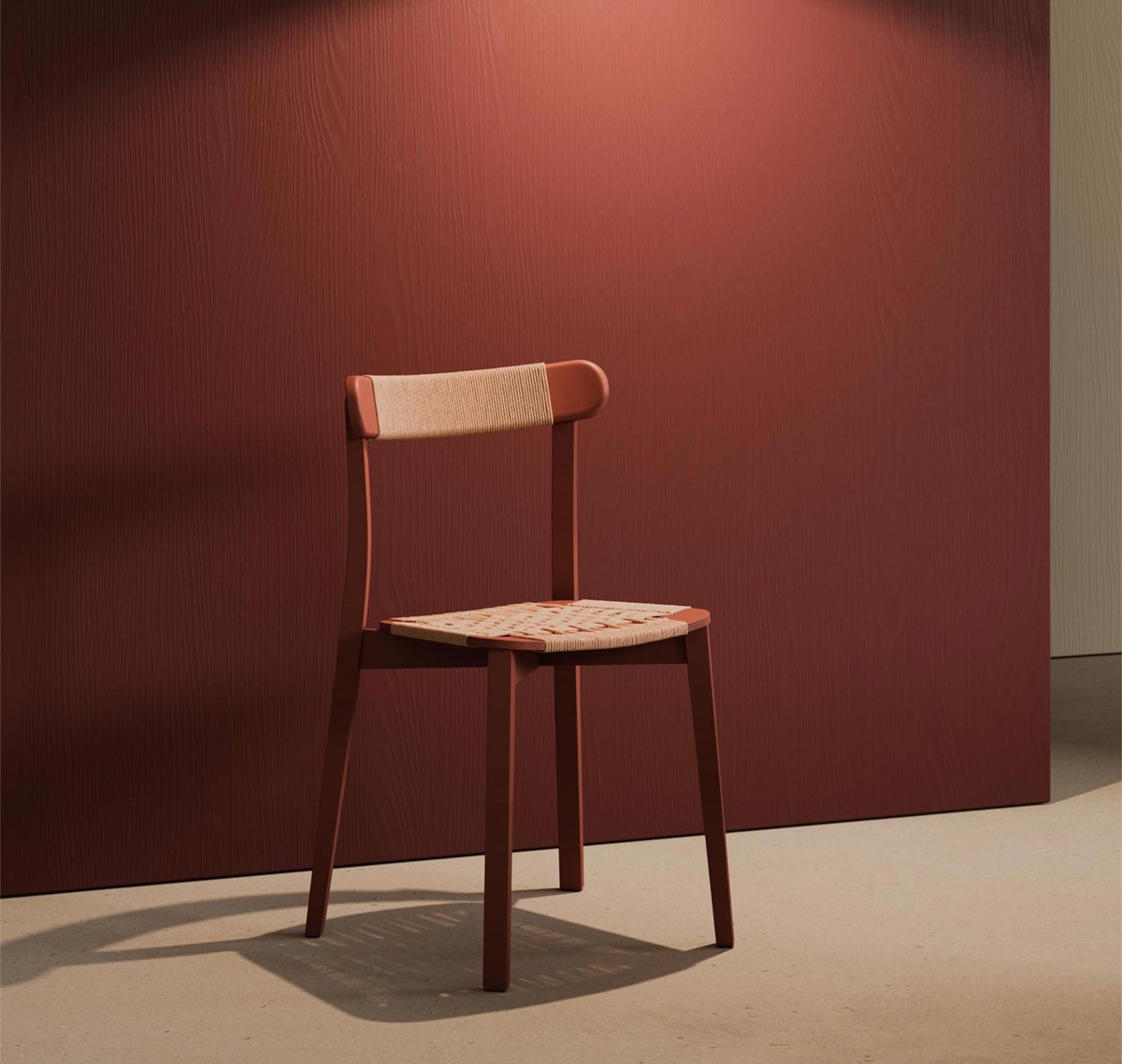Soon premiere of Paged Meble chair designed by Maciej Karpiak – interview with the designer
On October 22-25 this year. Paged Meble will make its debut at the Orgatec fair in Cologne. For the occasion, the brand has prepared a unique premiere – a chair designed by Maciej Karpiak, a designer particularly interested in the development of new technologies that will improve the quality of life on Earth, and the first Pole ever to present prototypes of his furniture at SaloneSatellite in Milan. We asked Maciej Karpiak to talk about the project he created with Paged Meble, and what is important to him in design. You will be able to see the new chair on October 22 at the Orgatec trade fair at the Paged Meble booth (hall 10.2, booth J039).
Why did a designer who is thinking about how we will populate other planets, whose design won a nomination for the finals of the 2016 Millennium Technology Prize, the equivalent of the Nobel Prize in technology, with decide to work with a brand that makes wooden chairs?
Maciej Karpiak: When it comes to design, I’m interested in a broad spectrum, and ifthere’s an opportunity to do something on an industrial scale, it’s in my orbit. Lately I’ve been working a lot on recycled materials, biocomposites, mostly in additive technologies, so perhaps it will seem strange to someone that I’m suddenly designing a chair. However, for me, the opportunity to work with natural material also has its value. Of course, I try to make sure that what is in my design DNA is present here as well, which is precisely working with recyclable or upcyclable materials.
Paged in the production of plywood has not used formaldehyde for a long time, when it comes to varnishing wooden surfaces, it works with water-based varnishes that meet strict environmental standards, we are not dealing here with chemicals that actually destroyed the material, which is wood. These are the aspects that had to be met for me to sit down for talks at all. And we came to an agreement with Paged very quickly.
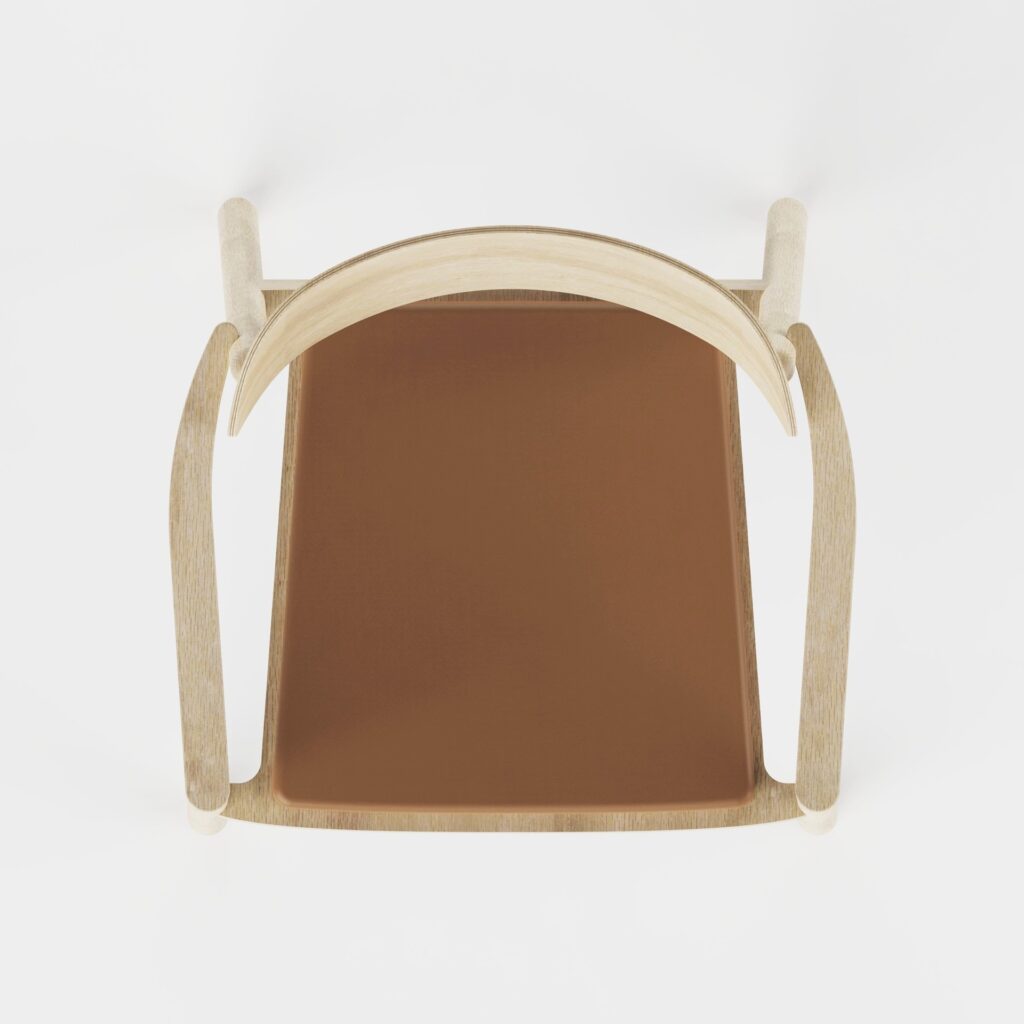
We will already see the result of your collaboration at Orgatec in Cologne on October 22. What is the project?
M.K.: What we will now present at Orgatec in Cologne is the first installment of our joint chair. On the other hand, at the moment I’m finishing work on such a version of it, which will have special nodes, thanks to which the chair will be completely removable, prepared for the so-called flatpack, which will enable Paged to enter a completely different level of sales of this product. Most of the chairs that are made with wood technology today are glued chairs, that is, they are packed in a cardboard box, which takes up a lot of space. In fact, it can be said that this precludes the wide availability of such a product on a global scale, because transportation is very expensive today, and there is no indication that this will change. The winner is the one who is able to deliver more goods in a cubic volume.
My assumption was to design a chair that would be technologically within the reach of Paged, I don’t want to say that this is an easy production, because today there is no such thing as an easy production of wooden chairs. There are large human resources required, and this has its pros and cons. On the one hand, we have a lot of manual processing, which is a value in itself today, while there are also resulting limitations in terms of the number of people who want to do such work. This is not at all as easy as it might seem. The person who was delegated to my project on the Paged side was Grzegorz Gancarczyk, who is an excellent chair designer. He, as a technologist, very quickly explained to me what was possible in their reality and what was not. I wanted to make a design that would be quite universal. So that this chair could be used in private spaces, but also in public spaces, so that it could function both in the contract market and in B2C sales. And a very important thing for me was that price-wise this product, even though it will be made of very good materials, should be reasonably accessible to more people than similar products from other manufacturers, especially foreign ones. Their prices in most cases are an insurmountable barrier for many customers both in Poland and abroad.
How did this approach manage to reconcile with what we mainly associate Paged with, wood bending?
M.K.: The first prototype was with a bent wood element, but that didn’t quite appeal to me. That’s why we bend the plywood – backrest and seat – and the other elements are processed without bending. You can’t have everything if the price is to be affordable and the repeatability very high. For me, the most valuable part of this project will be what is yet to come – the creation of the flatpack chair. If we had bent wood parts, it would most likely not be possible to do that.
When it comes to wood bending, I actually don’t know of a machine in the world that can do it for a human. I don’t think it’s achievable, because it’s a process in which a human being has a place. It’s a bit like blowing glass, there is no robot that can do it. It’s a process that happens here and now, it can’t be planned, unified. The metallurgist who blows that bubble knows when to stop, how many times to turn the tibia so that the glass is evenly distributed on the wall. The robot won’t do something it can’t see. When you put a glass bubble in a mold, that mold closes and you can’t see what’s going on inside. It takes an incredible amount of intuition to control the process. Similarly, in bending wood, although the process itself is different, those men who work in the bending shop know how hard and how fast to press so that the wood doesn’t break. If it’s paired too short or had the wrong moisture content when it went into the steamer, it will fail. This process is controlled manually, so at some point I changed the concept and we replaced the bent wood element with bent plywood elements on the backrest and seat. In these we use Paged’s bending technology, the rest is already CNC and manual processing.
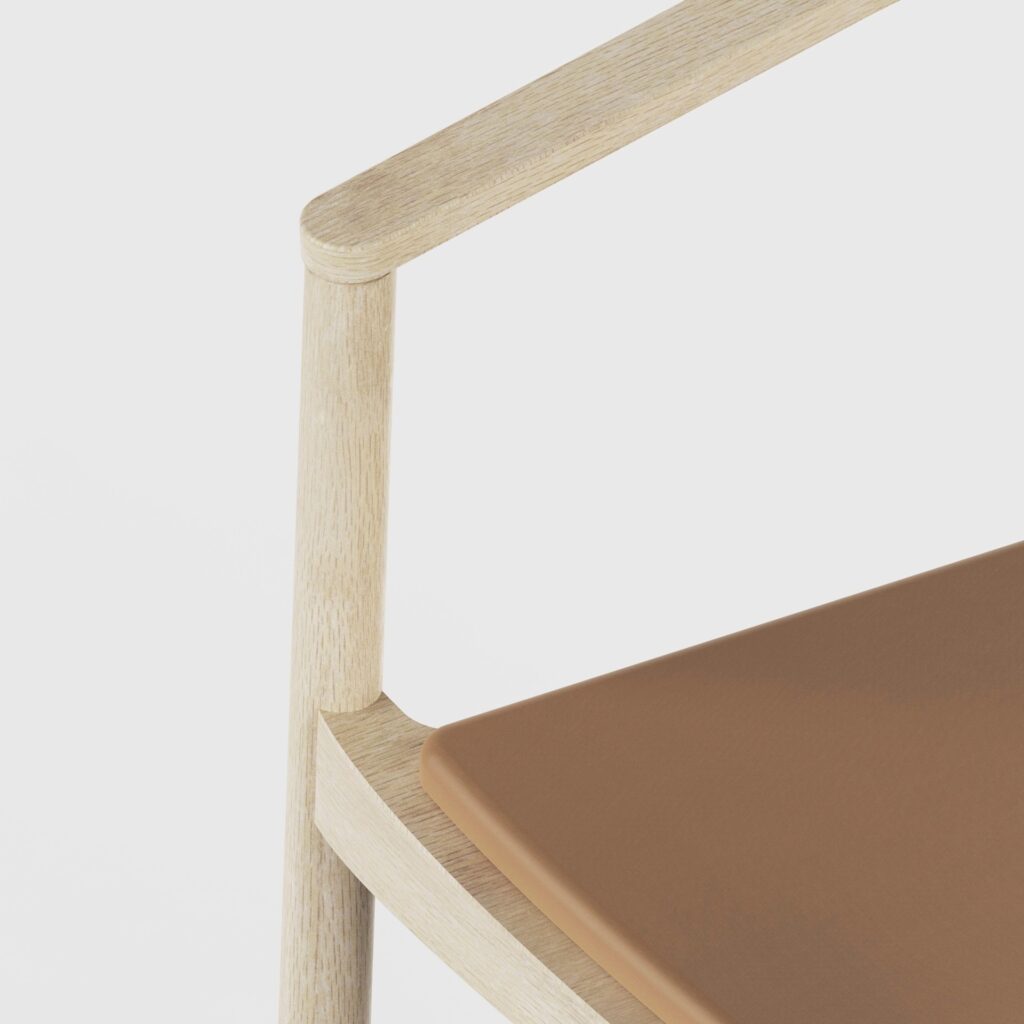
So robots will not replace craftsmen?
M.K.: Perhaps it will happen. I myself work a bit with robots on a daily basis, and I suppose it could be that simply for the time being no one is trying it, because there is no need for it. The question is whether, if there is one, there will be a robot that will be smart enough to learn the job. For him, it won’t be a problem to work 24/7, which is unrealistic for humans.
At the moment, however, this is done by hand, and it is no exaggeration to say that there is no product at Paged that has not been touched by human hands. Every product passes through many pairs of hands before it hits the market. This has its own charm, but it also has to be priced right. There is no way to get past that. People who want this type of chair have to expect to spend a little more.
In the case of a chair produced by high-pressure injection molding technology, a long time is worked on the mold, but then it only takes a few seconds and a finished product is created. If the mold is well designed, in fact, once it is removed from the mold, no additional processing is needed, the product is immediately packaged and ready for shipping. These are two different worlds, and I am not denying either of them. It’s just that Paged offers this solution, and customers decide for themselves whether they want to sit on an injected chair or a man-made one.
In the era of mass production, a handmade product is something elitist. What you have created is such a middle way?
M.K.: That’s what I wanted, to have as many repetitive elements as possible. Quite recently someone said about me that Maciek’s middle name is “systemic”. And I subscribe to that. I don’t deny it, I’m even glad that someone noticed something like that. I think that every project I work on is very systemic. I try to approach the project from the start in such a way that I capture common denominators that will be used to build a larger family of products. I think from the manufacturer’s point of view this is an advantage, because we have some optimization. Maybe I’m thinking very hard about process and technology, but that’s who I am, and I think it’s the right approach to design.
This is certainly in line with the concept of responsible design, looking at a product not just as an object, but from the perspective of its entire life cycle and how it affects the world, from the production process, through use, to eventual recycling or upcycling. Where are we on this path and how will it change in the future?
M.K.: Things are changing, fortunately in the right direction. Gone are the days more than a decade ago when, if you talked to factories about doing something in a sustainable way, no one was interested in such solutions, because it’s additional, unnecessary costs. Back then, the market didn’t need it, and today manufacturers are looking for such solutions, because we’re about to have 2030, 2035, when everyone will be caught up with new regulations and it will be very hard to produce with materials that won’t be recyclable.
The vast majority of my work is products that will go into upcycling. This is certainly a giant step forward, but there are areas of life where we can’t change much for now. Civilizationally, we are not yet ready to replace all materials. It has long been known how harmful plastics are if you use them irresponsibly. Despite this, today we have no regulations that would require food producers to produce recyclable packaging.
When you go to the grocery store, I invite you to the section where the refrigerators are, see the packaging of sliced cheese and cold cuts. On how many there are stamps that tell the consumer that the packaging is recyclable, or any information at all about what to do with the packaging afterwards. We are imposed to segregate waste, but no one really makes it easy. Meanwhile, there are huge amounts of this packaging, which comes into our homes every day with foodstuffs, and the public is absolutely not educated about it. This is a very big problem. If we want to build a society that functions sustainably, we should start with education.
There are plastics that, by definition, are one hundred percent suitable for upcycling. They meet all the requirements and there is no problem at all to select such materials and produce from them.
Adequate regulation could help?
M.K.: How many entities are there today that, when releasing something to the market, are later responsible for that product? It would be easier for a manufacturer to control the entire life cycle of a product if he processed the material obtained from the market himself to produce a new product. He would have to have a production path such that when the consumer wants to abandon the product, he would take it from him, process it and produce another one. If everyone worked in a closed loop and each producer was responsible for what he or she produced, we would have virtually no waste.
If demographers are to be believed, that there are to be 15 billion of us in the world in 2050, then I wonder, will my children at a ripe old age have the opportunity to live as I do today, if there are to be twice as many of us? It begs the question, where are we going to produce twice as much food, do we have that much surface area? Where will we get enough materials to build twice as many houses?
There is a need to change attitudes, to teach new generations to function differently, and today this education is not there. I can and want to make better decisions in certain aspects of daily life, but one person won’t get it done.
So what is the role of designers in creating a new model for more sustainable functioning? Can responsible design help solve crises such as climate, energy, garbage?
M.K.: Designers are responsible for ideas, concepts. I believe, and I have said many times, that good design is only and as much as thirty percent of success. The designer has no influence on how the marketing materials will be prepared, how the sales department will market the product, how the product will rotate in the market. There is a whole host of dependencies that determine whether a product has a chance to function in the market or not. But if designers don’t start doing it now, who will? The manufacturers themselves? Perhaps companies that have developed R&D departments, but most manufacturers in R&D, design departments, do not employ creative people only engineers. There are no people there who are able to create a new path, a new trend in the market. Here there is a huge role for designers. We give the impetus, and companies that are able to pick it up and pass it on will begin to dictate the conditions in the market.
Is Paged Meble such a company?
M.K.: In the case of wooden chairs, we produce using traditional technology, we have a piece of material from which we cut the shapes needed to assemble the product. A lot of waste is created in the process, and I firmly believe that soon all this waste will be able to be managed. Already, together with Paged, we have taken the first steps to this end. There is already technology that allows 3D printing from wooden shavings created during production. The first step will be to bring about zero waste production, and the next big step is to put it all on the upcycling path. Even if I were to throw this chair of mine, which will now be debuting at Orgatec, into a machine that shreds it into chips, if I can produce another product with those bags, then turn it into chips again, and print another, and another, and another, that’s a path that interests me. And I think it’s a matter of a short time, perhaps a year or two, how a full circuit for this type of production will be developed.
